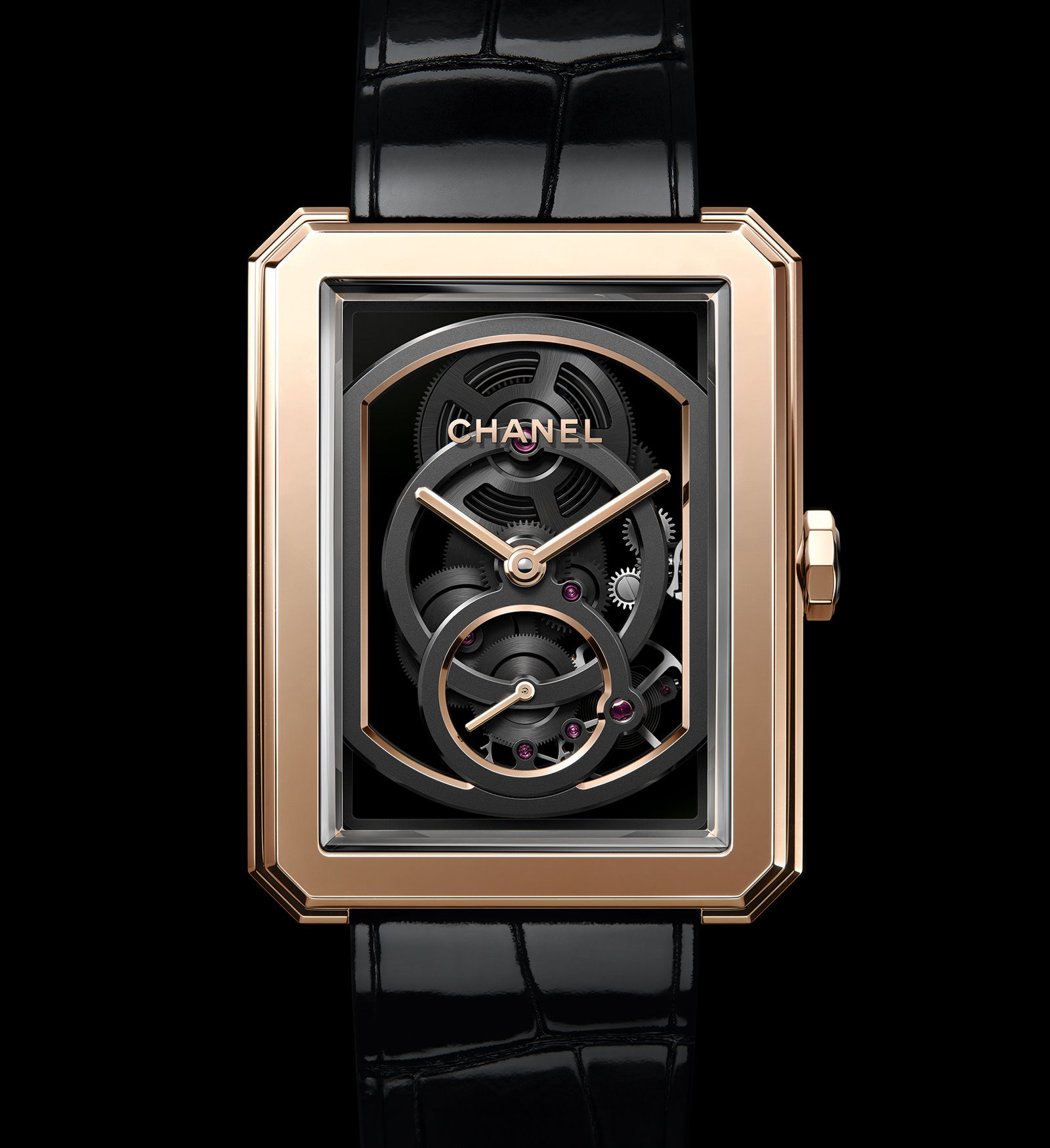Chanel Debuts In-House, Skeleton Movement
Inside the Boy.Friend.
Following the introduction of the impressive Monsieur de Chanel Calibre 1 in 2016 and the Première Camelia Skeleton Calibre 2 last year, Chanel recently unveiled its third in-house movement. Making its debut in the oblong Boy.Friend watch, the Calibre 3 is a skeletonised, hand-wound movement.
Featuring a distinctive, vertically linear construction, the Calibre 3’s clean, circular lines are a pleasing complement to the rectangular Art Deco case that’s inspired by the bottle cap of Chanel’s no. 5 perfume.
Launched in 2015, the Boy.Friend watch was a riff on the octagonal design of Chanel’s better known Première lady’s watch. The Boy.Friend is a watch for ladies, but conceived as a being slightly more masculine; a watch a lady might borrow from her boyfriend, hence the name. Prior to this, the Boy.Friend watches were powered by either an ETA 7001 or a quartz movement.
Developed by Chanel subsidiary G&F Châtelain in La Chaux-de-Fonds, along with help from independent watchmaker Romain Gauthier (in which Chanel owns a stake), the Calibre 3 is neatly framed by three overlapping circles. Thoughtfully and impeccably designed, the movement is laid out vertically, with the barrel at 12 o’clock, the regulator at five o’clock, and the wheel train in between.
The ADLC coated bridges are edged with a beige-gold galvanic coating, ensuring an aesthetic unity between the beige-gold case and movement. There’s even Chanel’s signature lion motif, attached to the third circular bridge on the back.
The movement beats at 4Hz, and is equipped with a variable inertia balance wheel and offers a 55-hour power reserve. The beige-gold case measures 37mm by 28.6mm and features a crown with an onyx cabochon. It’s also available in a gem-set version with 66 brilliant-cut diamonds on the bezel.
Price and Availability
The Chanel Boy.Friend Skeleton is priced at €36,500 while the diamond-set version at €42,500.
Back to top.